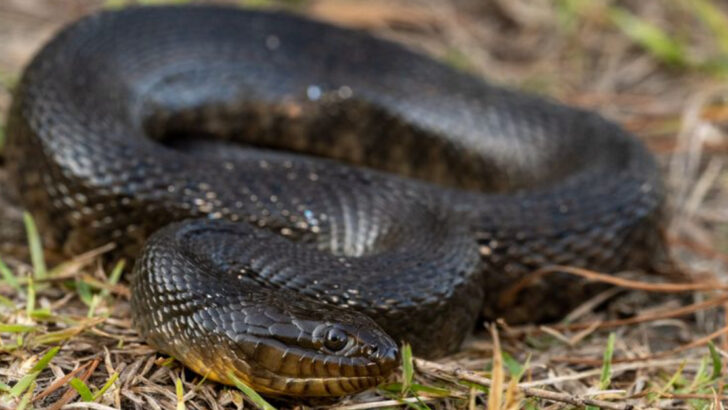They’re sleek, silent, and sometimes deadly—Florida’s swamps are crawling with serpentine royalty.
These snakes aren’t just background creatures in some humid wilderness. They own it. From neon-colored coils to sly, mud-colored masters of camouflage, the slithering residents of the Sunshine State have flair, attitude, and fangs that mean business.
Some are massive, stretching across trails like living speed bumps. Others are barely a whisper among the reeds—until it’s too late to notice. And yes, while some are harmless (and honestly adorable), a few will absolutely make you think twice about wading through the marsh.
Grab your boots, steady your nerves, and prepare for 15 of Florida’s most unforgettable swamp-dwellers. This is not a list for the faint of heart.
Eastern Diamondback Rattlesnake
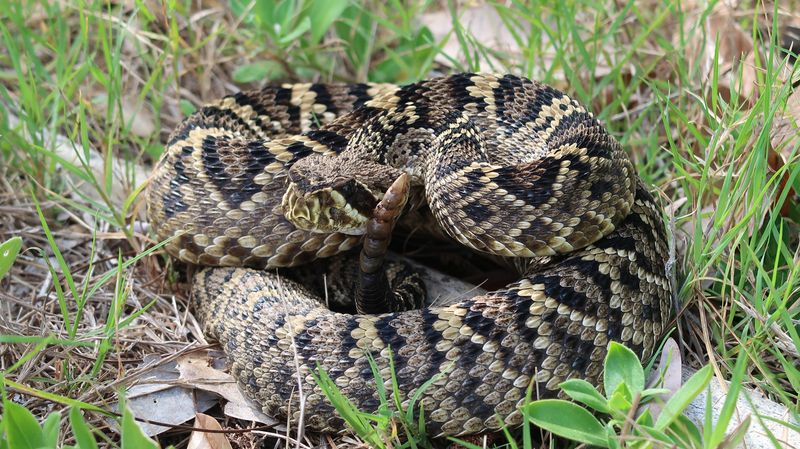
The Eastern Diamondback Rattlesnake, with its iconic diamond-shaped patterns, is a sight to behold in Florida’s swamps. Known as the largest venomous snake in North America, its presence commands respect. When disturbed, its distinctive rattle serves as a warning to keep your distance.
This snake thrives in the warm, humid climate of Florida, often seen basking on logs or slithering through the underbrush. Despite its fearsome reputation, it plays a crucial role in controlling rodent populations. Approach with caution, and you’ll witness one of nature’s most efficient predators in action.
Cottonmouth (Water Moccasin)
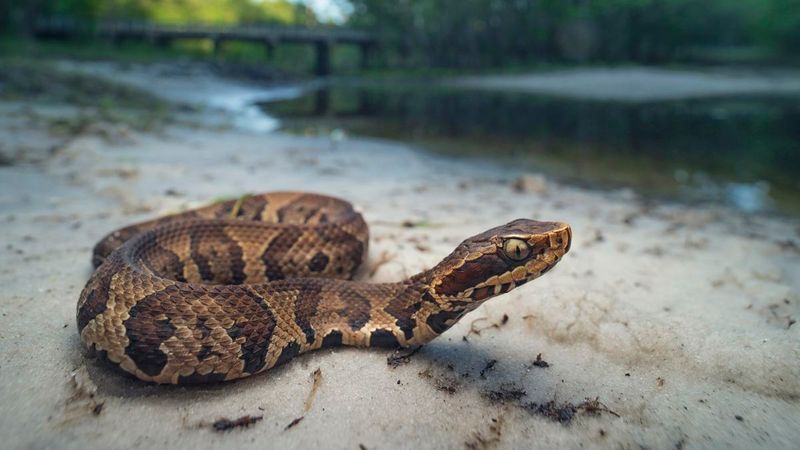
The Cottonmouth, or Water Moccasin, is notorious for its aggressive nature and distinctive white mouth. Encountering one in Florida’s swamps can be a thrilling experience. This semi-aquatic pit viper prefers slow-moving waters, often basking on rocks or logs.
Its dark, olive-brown body provides excellent camouflage among the swamp’s murky waters. While its bite is venomous, the Cottonmouth typically avoids confrontation unless provoked. Observing this snake in its natural habitat offers a glimpse into its mysterious world. Keep a respectful distance and marvel at its adaptability to both land and water environments.
Florida Kingsnake
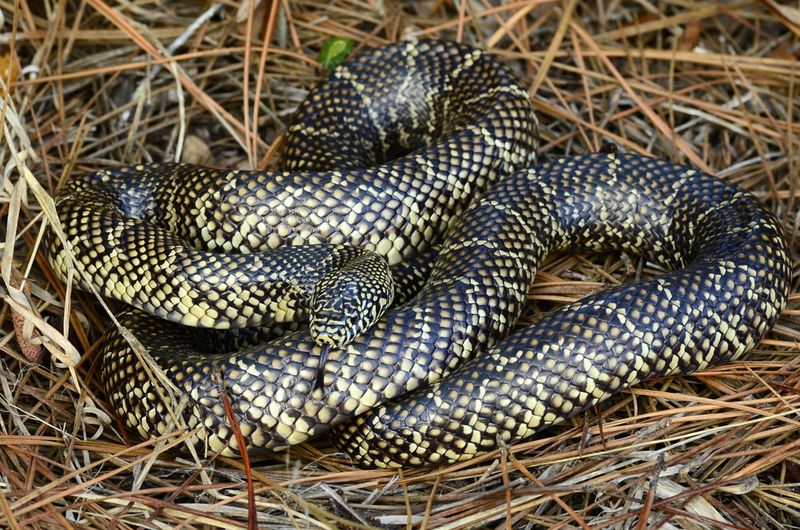
The Florida Kingsnake is a colorful and adaptable serpent found slithering through the state’s swamps. With its striking black and yellow bands, it easily stands out in its lush environment. Known for its non-venomous nature, this snake is a favorite among reptile enthusiasts.
Despite its harmless demeanor, the Florida Kingsnake is a skilled hunter. It often preys on other snakes, including venomous ones, showcasing its immunity to their venom. This fascinating trait makes it a valuable part of the ecosystem. Its beauty and unique behavior make every encounter a memorable one.
Eastern Coral Snake
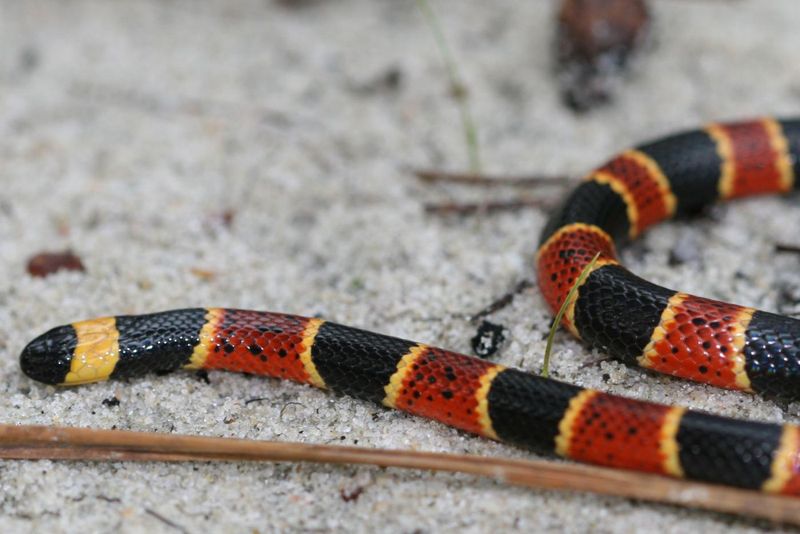
The Eastern Coral Snake is a strikingly beautiful yet venomous inhabitant of Florida’s swamps. Its vibrant red, yellow, and black bands are a signal to observe but not disturb. Known for its potent neurotoxic venom, it’s often confused with non-venomous mimic species like the Scarlet Kingsnake.
This elusive snake prefers hiding under leaf litter or within dense vegetation. While sightings are rare due to its reclusive nature, its presence is a testament to the swamp’s biodiversity. Remember the rhyme, “Red touch yellow, kill a fellow,” to distinguish it from its harmless look-alikes.
Florida Green Water Snake
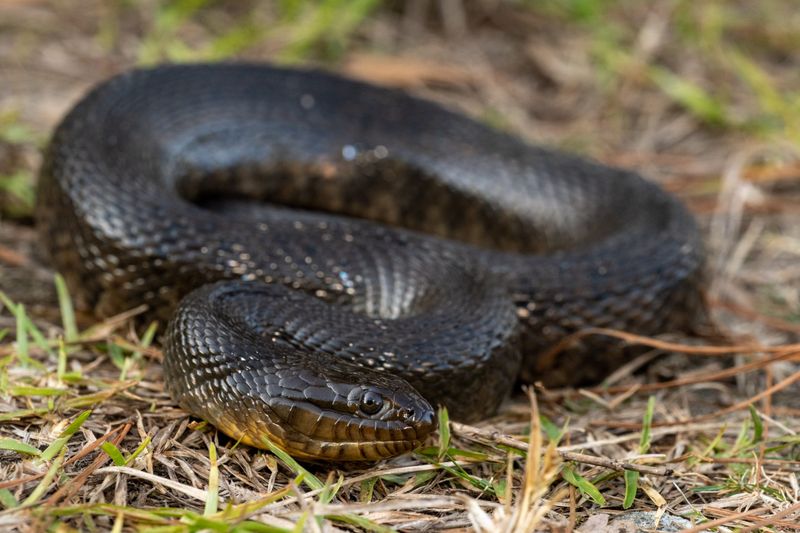
The Florida Green Water Snake is a common sight near freshwater bodies in Florida. With its olive-green scales glistening in the sunlight, it elegantly navigates both land and water. Non-venomous and generally docile, this snake is often seen basking on the banks or swimming gracefully.
Its diet mainly consists of fish and amphibians, making it an important predator in its aquatic ecosystem. Though it may appear intimidating, this snake poses no threat to humans and plays a crucial role in maintaining ecological balance. Observers can enjoy watching its seamless movements across the swamp’s surface.
Southern Black Racer
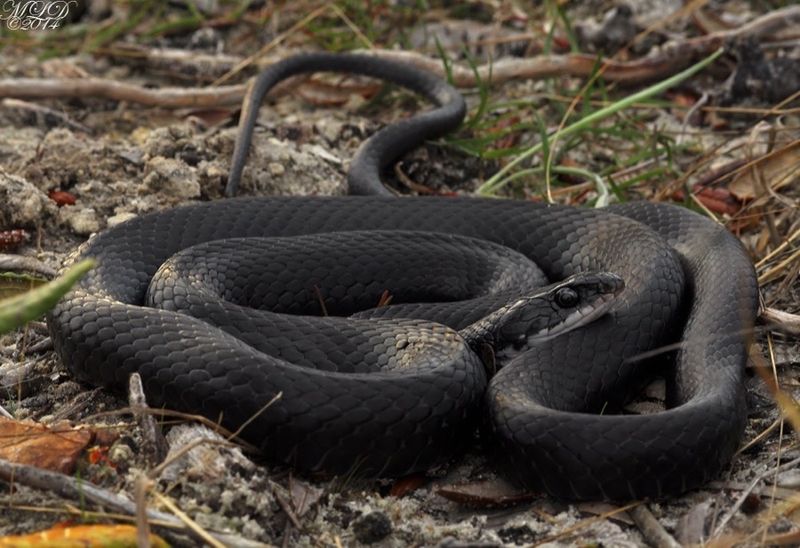
The Southern Black Racer is one of Florida’s fastest and most agile snakes. Its sleek, shiny black scales give it a captivating appearance as it darts through the grass. Non-venomous and curious, it often investigates its surroundings with remarkable speed.
This snake is known for its quick reflexes and adaptability to various environments, including swamps, forests, and suburban areas. It primarily feeds on small rodents and insects, controlling pest populations. While it may seem elusive, a patient observer might catch a glimpse of this energetic snake as it swiftly moves through its habitat.
Florida Cottonmouth
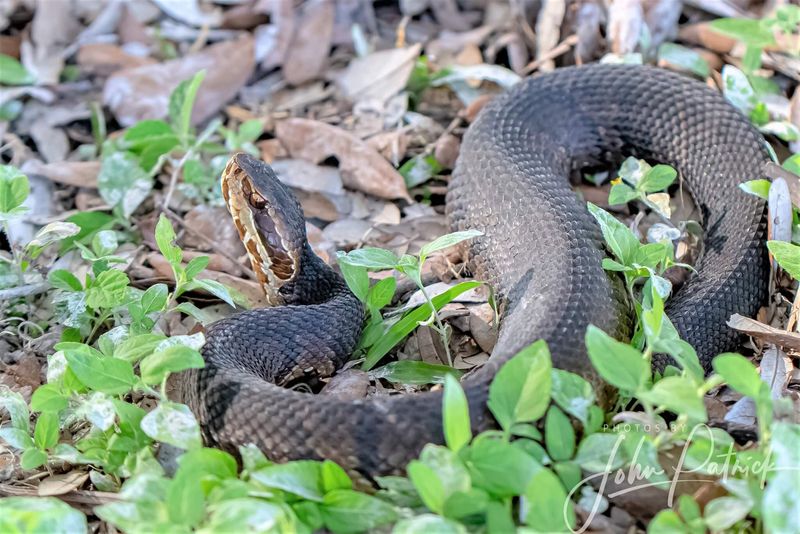
The Florida Cottonmouth is a variant of the notorious Water Moccasin, known for its menacing display of a stark white mouth. Found in the swampy regions of Florida, this snake thrives in both aquatic and terrestrial environments.
Its dark, heavy-bodied appearance adds to its intimidating presence. Despite its reputation for aggression, the Florida Cottonmouth often chooses to retreat when given a chance. It plays a vital role in the ecosystem by controlling fish and amphibian populations. Witnessing its defensive posture is both thrilling and a reminder of its powerful nature.
Banded Water Snake
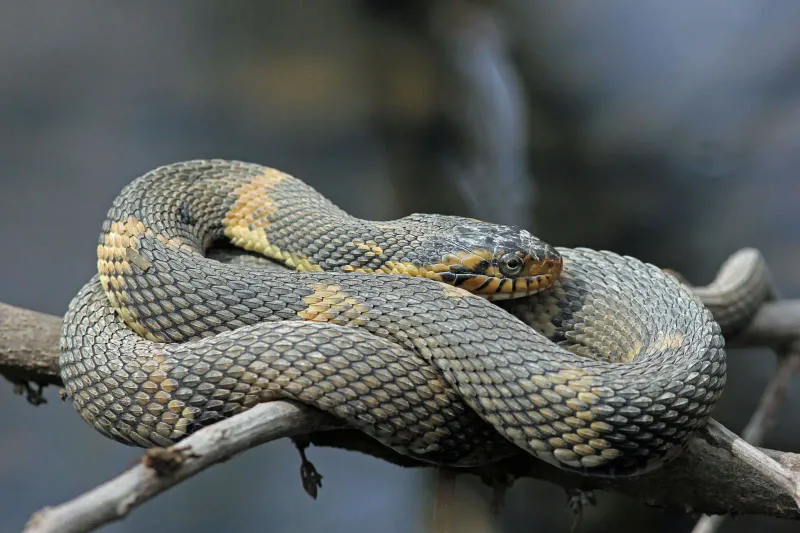
The Banded Water Snake is a common resident of Florida’s swamps, easily recognized by its alternating dark and light bands. It often basks on branches above water or swims just below the surface, searching for fish and frogs.
While frequently mistaken for the venomous Cottonmouth, this non-venomous snake is harmless to humans. Its adaptability to various aquatic habitats makes it a thriving species within the swamp ecosystem. Observing its behavior offers insight into the life of swamp dwellers. Its presence highlights the rich diversity of Florida’s wetland fauna.
Pygmy Rattlesnake
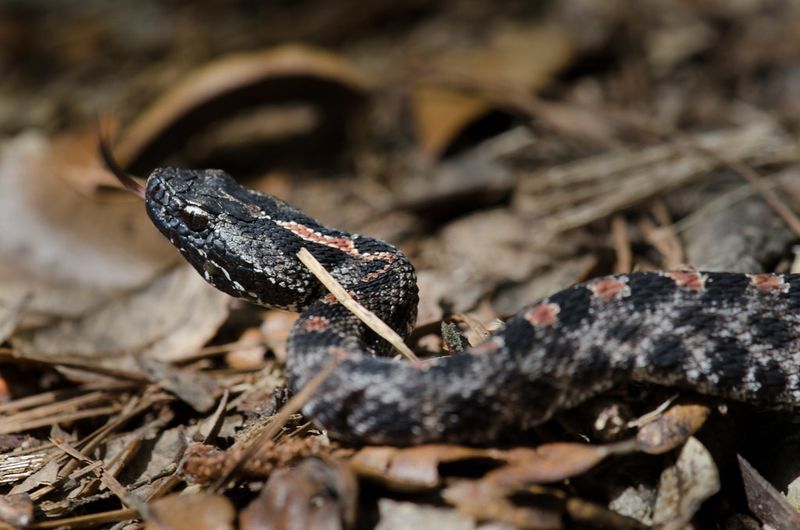
The Pygmy Rattlesnake, though small in size, is a formidable predator in Florida’s swamps. Its compact body and faint rattle make it a master of stealth. Often found coiled in leaf litter, its camouflage is nearly perfect.
This venomous snake preys on small rodents and insects, playing a significant role in the food chain. Though its bite is painful, it is rarely fatal to humans. Spotting a Pygmy Rattlesnake requires a keen eye, as it blends seamlessly with its surroundings. Its presence is a testament to the intricate balance of swamp life.
Ring-necked Snake
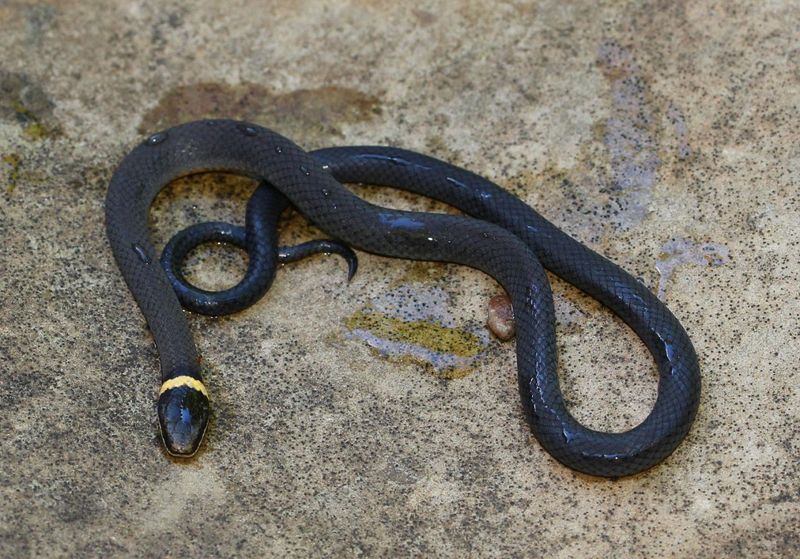
The Ring-necked Snake is a small, elegant snake that graces the swamps of Florida. Its most distinctive feature, a bright orange ring around its neck, sets it apart from other species. This non-venomous snake is often found under logs or stones.
Its diet consists mainly of small amphibians and insects, contributing to the swamp’s ecological balance. Though it may be small, its presence is significant in the diverse snake community. With a gentle demeanor and striking appearance, the Ring-necked Snake is a delightful surprise for those exploring the swamp’s hidden corners.
Brown Water Snake
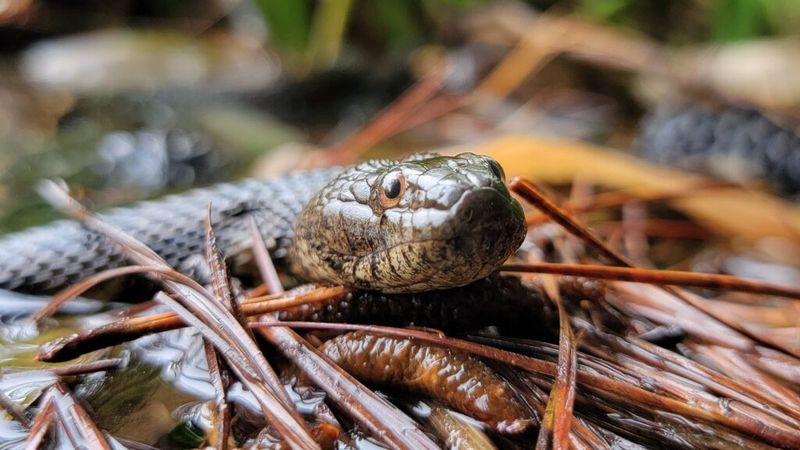
The Brown Water Snake is well-adapted to Florida’s swampy landscapes, often seen basking on branches over water. Its robust body and brown, mottled pattern help it blend seamlessly with its environment.
While non-venomous, its resemblance to the Cottonmouth can cause unease among onlookers. However, this snake is harmless and plays a vital role in controlling fish populations. Observing the Brown Water Snake offers a glimpse into the daily life of swamp inhabitants. Its ability to thrive in such a dynamic habitat is a testament to its adaptability and resilience.
Eastern Indigo Snake
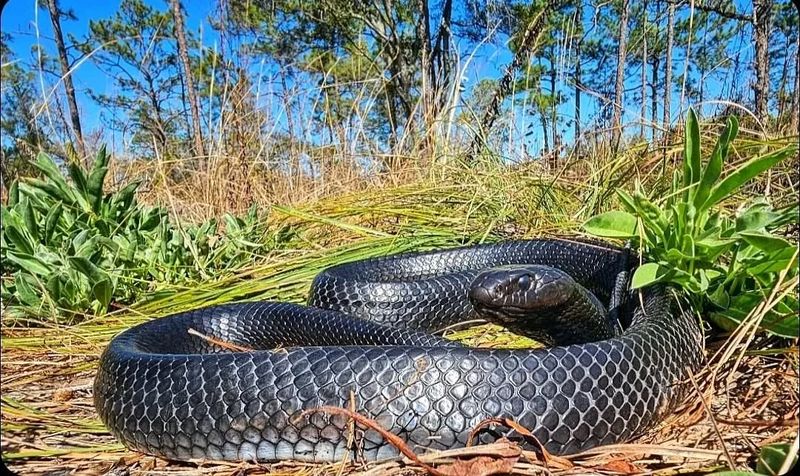
The Eastern Indigo Snake is a majestic presence in Florida’s swamps, renowned for its iridescent blue-black scales. As the longest native snake in the United States, its regal appearance is captivating.
This non-venomous snake is known for its docile nature and preference for solitude. It preys on a variety of animals, including small mammals, birds, and even other snakes. Sightings of the Eastern Indigo are rare, making each encounter a special event for wildlife enthusiasts. Its role in maintaining ecological balance underscores its importance within the swamp ecosystem.
Mud Snake

The Mud Snake, with its glossy black body and striking red belly, is a nocturnal wonder of Florida’s swamps. This secretive snake prefers to remain hidden during the day, emerging at night to hunt for its favorite prey, the amphiuma.
Non-venomous and shy, the Mud Snake poses no threat to humans. Its vibrant coloration is a visual delight for those fortunate enough to spot it. The Mud Snake’s elusive nature and specialized diet contribute to its mystique. Its presence is a reminder of the hidden treasures waiting to be discovered in the swamp’s depths.
Yellow Rat Snake
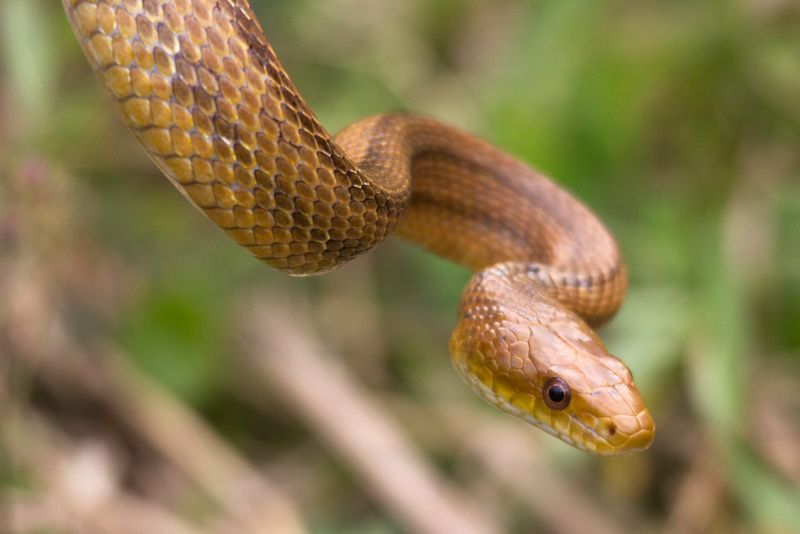
The Yellow Rat Snake is an arboreal resident of Florida’s swamps, easily recognized by its vibrant yellow scales. This non-venomous snake is often seen navigating trees and bushes with ease.
Its diet primarily consists of rodents and birds, making it an effective pest controller. The Yellow Rat Snake’s calm demeanor and vivid coloration make it a favorite among snake enthusiasts. Observing its climbing prowess offers insights into its adaptability. This snake’s presence adds a splash of color to the swamp’s palette, enhancing the region’s rich biodiversity.
Rainbow Python

Imagine stumbling upon a snake so dazzling, it seems to have been painted by a rainbow itself. Meet the Rainbow Python, a truly mesmerizing inhabitant of Florida’s swamps. With scales that glisten in hues of blue, green, and even hints of purple, this snake is a spectacle in motion.
Moving silently through the underbrush, the Rainbow Python is not just a visual delight but also a master of stealth. Its iridescent coat serves as a perfect camouflage amidst the vibrant swamp foliage, making it both a challenge and a joy to spot.
While not as infamous as its rattling counterparts, the Rainbow Python captivates with its serene and graceful presence. As it glides effortlessly through the waters, it paints a picture of tranquility and beauty that is rare in the world of reptiles.

